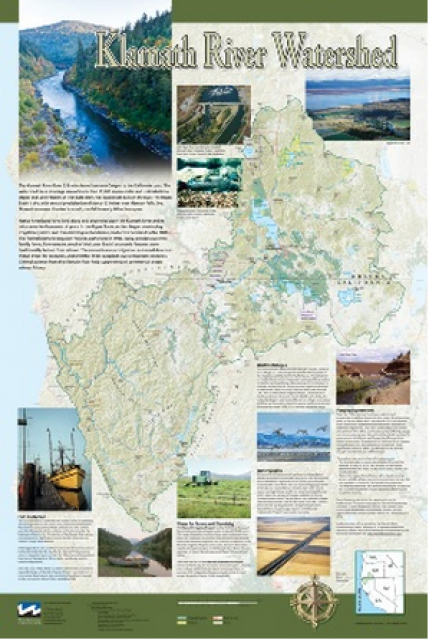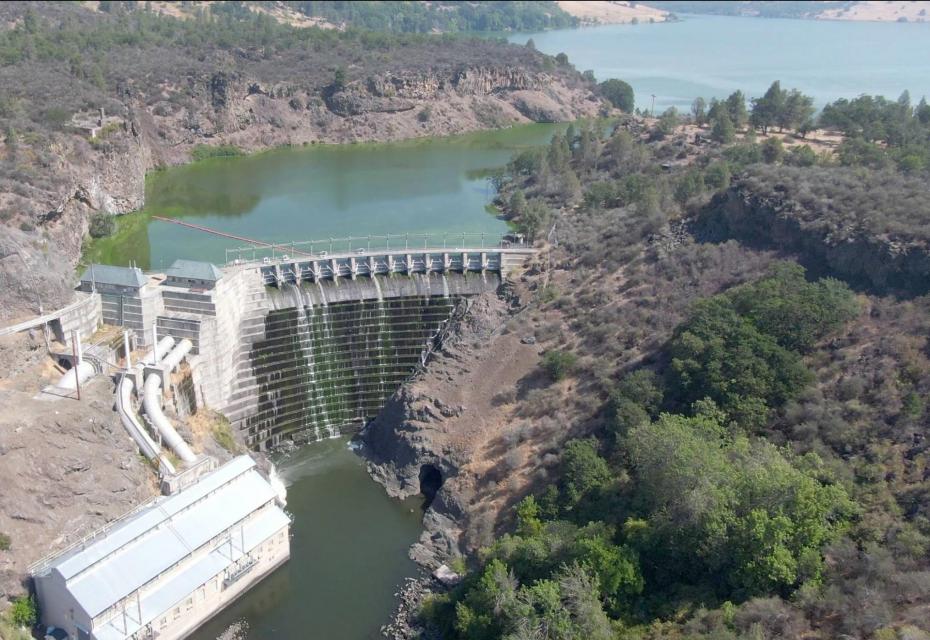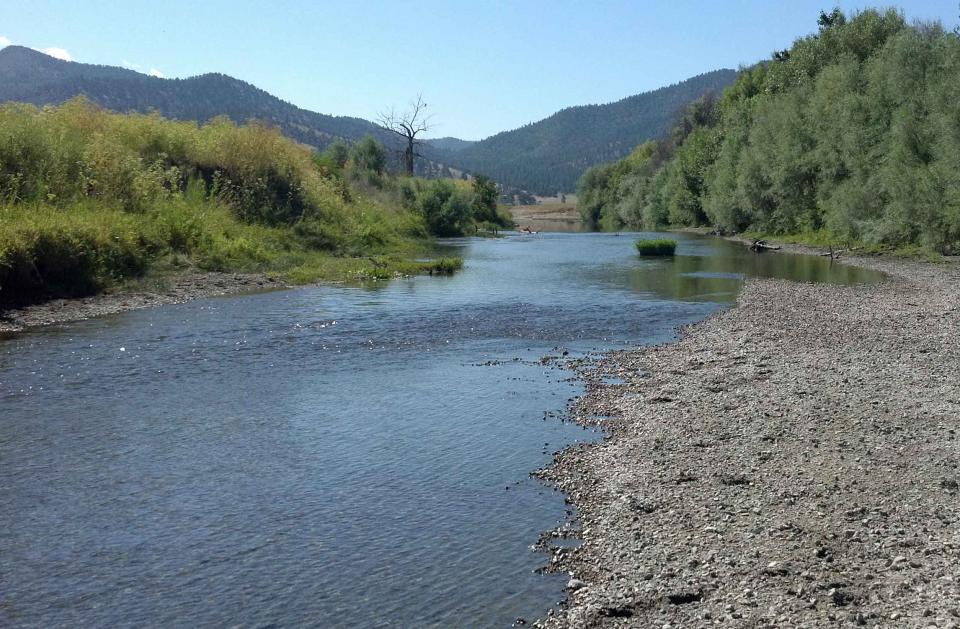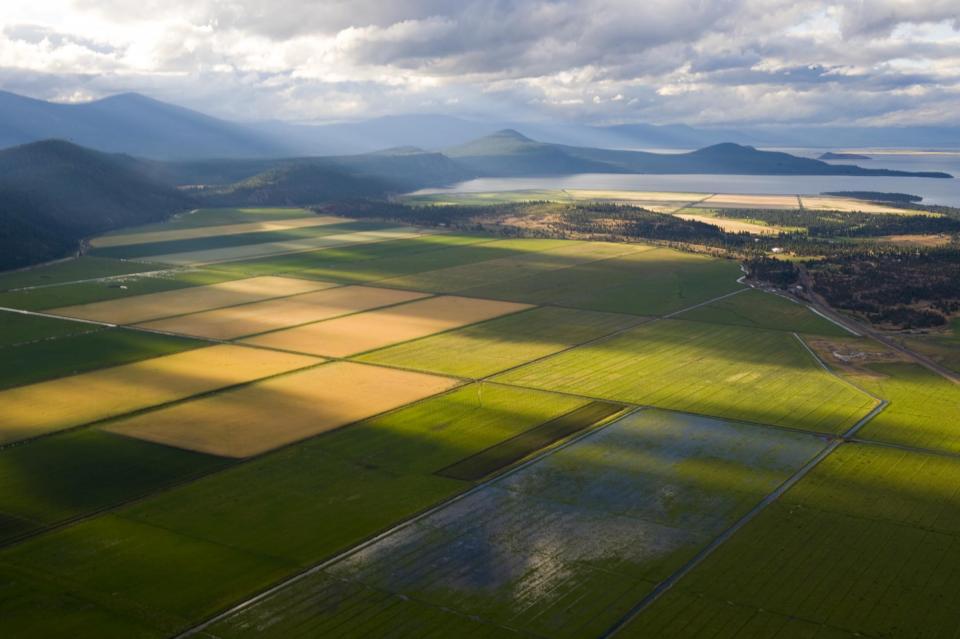Klamath River Watershed Map
Published 2011
This beautiful 24×36-inch poster, suitable for framing, displays the rivers, lakes and reservoirs, irrigated farmland, urban areas and Indian reservations within the Klamath River Watershed. The map text explains the many issues facing this vast, 15,000-square-mile watershed, including fish restoration; agricultural water use; and wetlands. Also included are descriptions of the separate, but linked, Klamath Basin Restoration Agreement and the Klamath Hydroelectric Agreement, and the next steps associated with those agreements. Development of the map was funded by a grant from the U.S. Fish and Wildlife Service.
To order 10 or more copies at a discounted fee, contact the Foundation at 916-444-6240 for more information.








